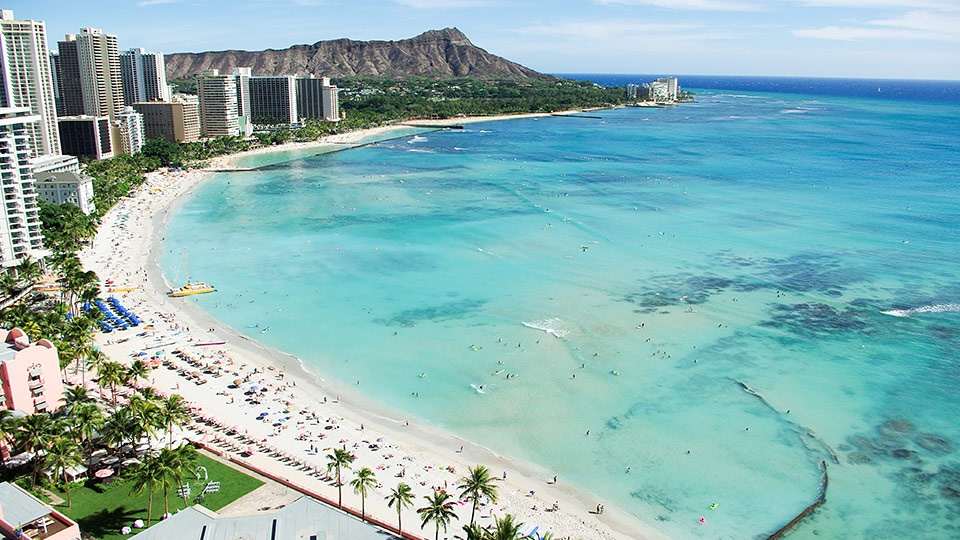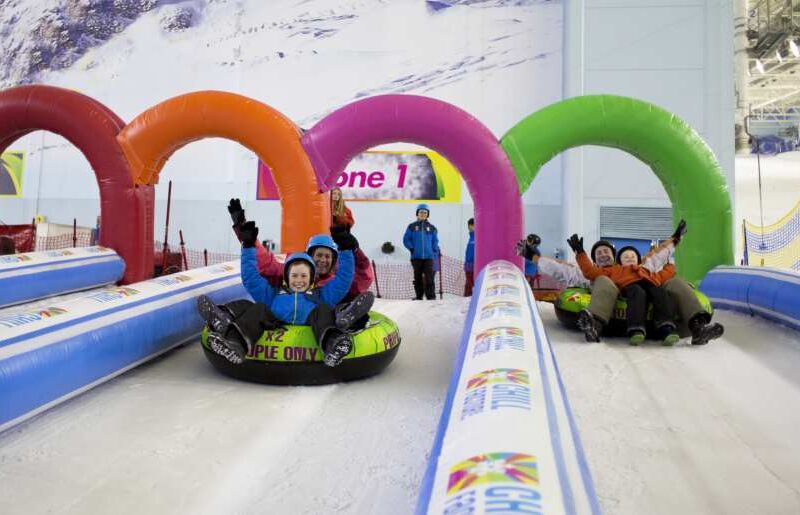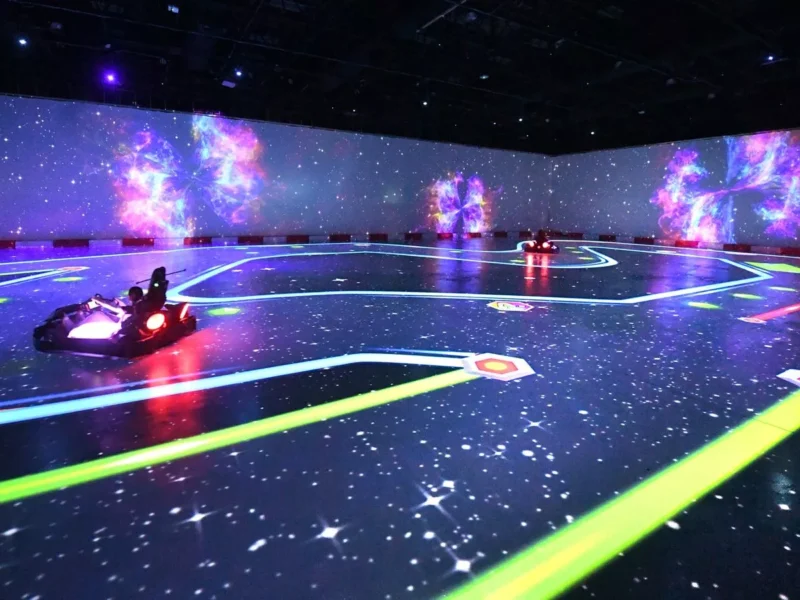Hawaii, located in the middle of the Pacific Ocean, is an amazing tropical paradise. It’s a favorite destination for tourists because of its beautiful scenery, rich culture, and tons of things to do. Each island in Hawaii has its own special charm, from Oahu’s famous beaches to Kauai’s lush rainforests.
In this tour, we’ll explore the must-see attractions that make Hawaii so magical. Whether you love the beach, outdoor adventures, history, or delicious food, Hawaii has something for everyone. Come with us as we discover the top attractions, hidden gems, and local favorites that will make your Hawaiian vacation unforgettable!
Aloha Hawaii

Hawaii, often referred to as the “Aloha State,” is a tropical paradise unlike any other. Situated in the heart of the Pacific Ocean, this enchanting archipelago is renowned for its stunning natural beauty, warm hospitality, and rich cultural heritage.
From pristine beaches with powdery white sand and crystal-clear turquoise waters to lush rainforests teeming with exotic flora and fauna, Hawaii offers a paradise-like setting that captivates visitors from around the globe.
But Hawaii’s allure goes beyond its breathtaking landscapes. The islands are steeped in a rich tapestry of history and culture, shaped by centuries of Polynesian voyaging, European exploration, and American influence.
Visitors to Hawaii can immerse themselves in traditional Hawaiian music and dance, sample delicious local cuisine infused with flavors from Asia, Europe, and the Americas, and explore ancient temples, royal palaces, and sacred sites that bear witness to the islands’ storied past.
Moreover, Hawaii is a haven for outdoor enthusiasts, offering a plethora of activities ranging from surfing, snorkeling, and hiking to whale watching, zip-lining, and volcano exploration.
Whether you’re seeking adventure, relaxation, or cultural immersion, Hawaii has something to offer for everyone, making it the ultimate destination for travelers seeking an unforgettable escape.
Quick facts about Hawaii’s location, language, and infrastructure
Hawaii is located in the central Pacific Ocean, approximately 2,000 miles southwest of the continental United States. It is the only U.S. state located outside North America and consists of an archipelago of eight main islands, along with numerous smaller islets and atolls.
The official language of Hawaii is English, but Hawaiian, an indigenous Polynesian language, is also widely spoken and holds special cultural significance. Visitors will often hear locals greeting each other with the word “aloha,” which means both “hello” and “goodbye,” as well as conveying sentiments of love, affection, and peace.
Hawaii has modern infrastructure and amenities to cater to the needs of travelers. The islands are well-connected by a network of airports, harbors, and highways, making it easy to travel between different destinations.
Additionally, Hawaii offers a wide range of accommodation options, from luxury resorts and boutique hotels to budget-friendly guesthouses and vacation rentals, ensuring that visitors can find accommodations to suit their preferences and budget.
Oahu

Oahu, often referred to as the “Gathering Place,” serves as the bustling gateway to the Hawaiian Islands.
As the most populous island in the archipelago, Oahu is home to the state capital, Honolulu, and serves as the political, economic, and cultural hub of Hawaii.
With its modern infrastructure, vibrant nightlife, and diverse culinary scene, Oahu offers visitors a taste of urban sophistication amidst the stunning natural beauty of the islands.
Upon arriving in Oahu, travelers are greeted by the bustling energy of Honolulu, a dynamic cityscape framed by towering skyscrapers, historic landmarks, and lush green mountains.
From the iconic skyline of downtown Honolulu to the historic district of Chinatown, the city offers a captivating blend of old-world charm and contemporary glamour.
Beyond the urban sprawl of Honolulu, Oahu boasts a wealth of natural wonders waiting to be explored. The island is renowned for its picturesque beaches, verdant valleys, and rugged coastline, offering endless opportunities for outdoor adventure and recreation.
Whether you’re surfing the legendary waves of Waikiki Beach, hiking to the summit of Diamond Head Crater, or snorkeling in the crystal-clear waters of Hanauma Bay, Oahu’s diverse landscapes promise unforgettable experiences for visitors of all ages.
Oahu’s attractions, including Honolulu and Waikiki Beach:
Honolulu
Downtown Honolulu: Explore the historic heart of the city, where you’ll find iconic landmarks such as Iolani Palace, the official residence of Hawaiian royalty, and the majestic King Kamehameha I Statue.
Chinatown: Immerse yourself in the vibrant sights, sounds, and flavors of Honolulu’s Chinatown, home to bustling markets, eclectic shops, and authentic eateries serving up delicious Asian cuisine.
Pearl Harbor: Pay homage to the heroes of World War II at Pearl Harbor, where you can visit the USS Arizona Memorial, USS Missouri Battleship, and USS Bowfin Submarine Museum & Park.
Waikiki Beach
Waikiki Beach: Bask in the sun on the world-famous shores of Waikiki Beach, a crescent-shaped stretch of golden sand fringed by swaying palm trees and iconic hotels.
Diamond Head: Hike to the summit of Diamond Head Crater for panoramic views of Waikiki and the surrounding coastline, and marvel at the ancient volcanic crater that dominates the landscape.
International Market Place: Shop for souvenirs, clothing, and local crafts at the International Market Place, a bustling open-air marketplace in the heart of Waikiki known for its lively atmosphere and eclectic offerings.
Maui

Maui, often referred to as the “Valley Isle,” is renowned for its stunning beaches, lush landscapes, and abundance of outdoor activities.
As the second-largest island in the Hawaiian archipelago, Maui offers visitors a diverse array of attractions, from world-class surfing and snorkeling spots to scenic hiking trails and breathtaking natural wonders.
Upon arriving in Maui, travelers are immediately struck by the island’s natural beauty, with its pristine beaches, turquoise waters, and dramatic volcanic landscapes.
The island’s laid-back atmosphere and warm hospitality create the perfect setting for a relaxing getaway or an action-packed adventure.
Maui’s beaches are among the most beautiful in the world, offering something for everyone, whether you’re seeking a secluded cove for sunbathing and swimming or a lively beach for water sports and people-watching.
From the iconic shores of Kaanapali and Wailea to the hidden gems of Hana and Makena, Maui’s coastline is dotted with picturesque beaches that beckon visitors to unwind and soak up the sun.
In addition to its stunning beaches, Maui is a paradise for outdoor enthusiasts, with a wealth of activities to suit every interest and skill level.
From snorkeling with sea turtles and whale watching in the winter months to hiking through lush rainforests and biking down the slopes of a dormant volcano, Maui offers endless opportunities for adventure and exploration.
Maui’s iconic attractions, such as the Road to Hana and Haleakalā National Park
One of Maui’s most iconic attractions, the Road to Hana is a scenic drive along the island’s rugged coastline, renowned for its breathtaking vistas, lush rainforests, and cascading waterfalls. The winding road passes through quaint towns, verdant valleys, and dramatic cliffs, offering visitors a glimpse into Maui’s untouched beauty.
Haleakalā, or “House of the Sun” in Hawaiian, is a dormant volcano and a sacred place cherished by native Hawaiians. The park covers the summit of Haleakalā, where visitors can marvel at breathtaking sunrises and sunsets above the clouds. Additionally, they can explore the extraordinary landscapes of volcanic craters, terrain resembling the moon, and distinctive plant and animal life.
Molokai

Molokai, often referred to as the “Friendly Isle,” is a hidden gem among the Hawaiian Islands, renowned for its untouched beauty, rich cultural heritage, and laid-back atmosphere.
As one of the least populated islands in the archipelago, Molokai offers visitors a glimpse into traditional Hawaiian life and a chance to experience the true essence of aloha.
Upon arriving in Molokai, travelers are immediately struck by the island’s unspoiled landscapes, with its rugged coastline, lush valleys, and pristine beaches.
Unlike its more developed counterparts, Molokai retains a sense of authenticity and tranquility that is rare to find in today’s world. Here, visitors can escape the crowds and immerse themselves in the simple pleasures of island life, from exploring secluded beaches to hiking through verdant forests and soaking up the sun on secluded shores.
But what truly sets Molokai apart is its warm and welcoming community, where locals greet visitors with open arms and share their rich cultural heritage with pride.
From traditional Hawaiian music and dance to artisan crafts and culinary delights, Molokai offers a taste of authentic Hawaiian culture that is sure to leave a lasting impression on visitors.
Molokai’s cultural and natural attractions
Sea Cliffs: Molokai has some of the world’s highest sea cliffs, soaring over 3,000 feet above the ocean along the island’s north shore. These stunning cliffs, called the “Pali Coast,” offer a mesmerizing view best experienced from the air via a helicopter tour or from the water on a boat excursion.
Kalaupapa National Historical Park: Kalaupapa National Historical Park sits on the quiet northern coast of Molokai. It’s an important place with a rich history and stunning scenery. Long ago, it was where people with Hansen’s disease (leprosy) were sent to live alone. Nowadays, visitors can see old buildings like churches and homes and learn about the brave people who lived there.
Lanai

Lanai, often referred to as the “Pineapple Isle,” is a secluded and luxurious destination that offers travelers a tranquil retreat from the hustle and bustle of everyday life.
As one of the smaller and less populated islands in the Hawaiian archipelago, Lanai is known for its pristine beaches, rugged landscapes, and exclusive resorts that cater to discerning travelers seeking privacy and relaxation.
Upon arriving in Lanai, visitors are immediately struck by the island’s serene atmosphere and natural beauty.
With its lush forests, dramatic sea cliffs, and crystal-clear waters, Lanai offers a picture-perfect setting for a romantic getaway, honeymoon, or luxury escape.
Here, travelers can unwind in style at one of the island’s world-class resorts, where attentive service, lavish accommodations, and stunning ocean views await.
Lanai isn’t just about fancy resorts and quiet beaches. It’s packed with fun things to do! You can snorkel in beautiful coral reefs, check out old buildings, and learn about the island’s history and culture. Whether you’re playing golf, getting pampered at a spa with an ocean view, or going on a hike through green valleys and rainforests, Lanai has something for everyone to enjoy.
Lanai’s attractions, including luxury resorts, snorkeling spots, and pineapple plantations
Lanai is home to some of the most exclusive and luxurious resorts in Hawaii, offering travelers an unparalleled level of comfort and sophistication.
From the Four Seasons Resort Lanai at Manele Bay to the Four Seasons Resort Lanai, The Lodge at Koele, each property offers world-class amenities, gourmet dining, and personalized service in a breathtaking setting.
Lanai possesses some of the best snorkeling spots in Hawaii, with pristine coral reefs teeming with colorful marine life just waiting to be explored. One of the most popular snorkeling destinations on the island is Hulopoe Bay, a protected marine reserve known for its crystal-clear waters, vibrant coral gardens, and abundance of tropical fish.
Although Lanai’s pineapple plantations are no longer in operation, the island’s agricultural heritage is still evident in its rolling hills and fertile valleys.
Visitors can learn about the island’s history as a major pineapple producer at the Lanai Culture & Heritage Center, where exhibits and displays showcase the island’s rich cultural heritage and agricultural legacy.
Kauai

Kauai, often hailed as the “Garden Isle,” is a verdant paradise that captivates visitors with its lush landscapes, dramatic coastlines, and pristine natural beauty.
As the oldest and northernmost island in the Hawaiian archipelago, Kauai boasts a rich tapestry of ecosystems, from dense rainforests and cascading waterfalls to rugged cliffs and secluded beaches.
Upon arriving in Kauai, travelers are greeted by the island’s breathtaking scenery, with emerald-green mountains towering over pristine beaches and turquoise waters.
The island’s fertile valleys and abundant rainfall create the perfect conditions for lush vegetation to thrive, earning Kauai its reputation as one of the most picturesque destinations in the world.
But Kauai’s allure goes beyond its stunning landscapes. The island is steeped in a rich cultural heritage, with ancient Hawaiian temples, sacred sites, and historic landmarks dotting the landscape.
Visitors can immerse themselves in traditional Hawaiian culture, music, and dance, or explore the island’s vibrant arts scene, with galleries, museums, and cultural festivals celebrating Kauai’s diverse heritage.
Kauai’s natural wonders, such as the Na Pali Coast and Waimea Canyon
The Na Pali Coast, one of Kauai’s most well-known attractions, is a rough length of coastline with towering sea cliffs, scenic beaches, and gushing waterfalls.
Accessible only by boat, helicopter, or hiking trail, the Na Pali Coast offers visitors a glimpse into Hawaii’s untouched beauty, with dramatic vistas and breathtaking scenery that have earned it a reputation as one of the most stunning coastlines in the world.
Waimea Canyon, also known as the “Grand Canyon of the Pacific,” is an incredible sight stretching over 14 miles long and plunging 3,000 feet deep. Shaped by nature over millions of years, it’s famous for its colorful cliffs, rough landscape, and wide views. Explorers can trek its trails, visit lookout points, and marvel at its natural wonders like Waipo’o Falls and the Kalalau Valley.
Hawaii (Big Island)

Hawaii Island, often simply referred to as the “Big Island,” is the largest and most diverse island in the Hawaiian archipelago.
With its vast landscapes, varied ecosystems, and rich cultural heritage, Hawaii Island offers visitors an unparalleled opportunity to explore the wonders of nature and experience the essence of aloha.
Upon arriving on Hawaii Island, travelers are struck by its sheer size and diversity, with a land area larger than all the other Hawaiian Islands combined. The island is home to a diverse range of landscapes, from snow-capped mountains and lush rainforests to barren lava fields and pristine beaches.
This diversity is a testament to the island’s volcanic origins, with five towering volcanoes dominating the landscape, including Mauna Kea, the tallest mountain in the world when measured from its base on the ocean floor.
But Hawaii Island’s allure goes beyond its natural beauty. The island is steeped in a rich cultural heritage, with a strong connection to the land and sea that has shaped the lives of its inhabitants for centuries.
Visitors can explore ancient Hawaiian temples, sacred sites, and historic landmarks, or immerse themselves in the vibrant traditions of hula, music, and dance that are still celebrated today.
Hawaii Island’s attractions, including Volcanoes National Park and Kona coffee plantations:
One of Hawaii Island’s most iconic attractions, Volcanoes National Park is a UNESCO World Heritage Site and a geological marvel that offers visitors a glimpse into the forces that shape our planet.
The park is home to two active volcanoes, Mauna Loa and Kilauea, as well as a diverse range of volcanic features, including lava tubes, craters, and steam vents.
Visitors can explore the park’s scenic overlooks, hiking trails, and visitor centers, learning about the island’s fiery origins and the ongoing volcanic activity that continues to shape the landscape.
Hawaii Island is renowned for its world-class coffee, with the Kona region in the island’s west coast producing some of the finest beans in the world.
Visitors can tour the region’s lush coffee plantations, learning about the coffee-growing process from bean to cup and sampling freshly roasted brews along the way.
The Kona Coffee Cultural Festival, held annually in November, celebrates the region’s rich coffee heritage with tastings, workshops, and cultural events that showcase the best of Kona’s coffee culture.
Final thoughts
Hawaii is a paradise filled with incredible destinations waiting to be explored by travelers of all ages. From the vibrant city streets of Honolulu to the peaceful beaches of Molokai, each island has its own special allure.
Whether you crave adventure, relaxation, or a chance to immerse yourself in nature and culture, Hawaii has it all. So, pack your bags and get ready to discover the beauty and wonders of the Hawaiian Islands, where paradise is around every corner.



